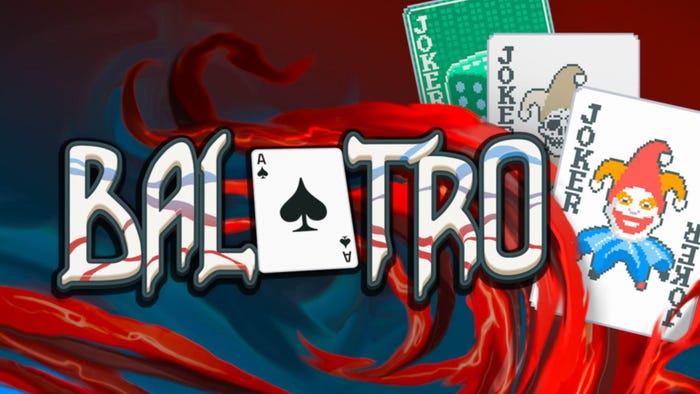
Featured Blog | This community-written post highlights the best of what the game industry has to offer. Read more like it on the Game Developer Blogs.
The Last of Us: The conflict of storytelling in games
The Last of Us is a wonderful testament to the power of storytelling in games, but its highly realised world cannot prevent a jarring disconnect when the gaming instincts take over. What future is there for mature and believable storytelling in games?

In a word, The Last of Us is astounding. This is not something that should come as a surprise to many when glancing at the perfect scores that were showered upon Naughty Dog’s latest title by a lot of satisfied reviewers. It is not premature to consider it a triumphant swansong of the current generation as we all prepare to usher in the Next-Gen of home consoles.
However, I don’t want to describe why I thoroughly enjoyed The Last of Us. Aside from it potentially taking too long to explain every fantastic minute detail, I want to focus on a fundamental issue I experienced throughout my time with the story of Joel and Ellie.
The keen-eyed amongst you will notice that, until now, I have made no reference to The Last of Us as a game. Therein lies the issue, and it is one that I just couldn’t overlook no matter how hard I tried during playing. The Last of Us is an intensely gripping story that happens to be presented in a brilliant game that puts the player in the leading role. Unfortunately, one of these aspects can end up being overshadowed or disrupted by the other despite the best intentions of the player or the writer.
Breaking the illusion
Right from the outset I was hooked by the character personalities, the way they moved, the dialog and little nuances of emotion visible on their face whilst playing the game. I was performing the part of a real character in a believable and horrific world and I was completely immersed.
I am Joel, walking with my partner Tess through the dystopia of a world ravaged by an unknown infection. As Tess and I converse on our journey through side-alleys and derelicts I suddenly notice something out of the corner of my eye. As Tess moves the conversation to highly pertinent matters I have wandered away from her and out of ear shot to see what this shiny item laying in a dark corner is. In that moment I am transported from this bleak world back to my living room and I am suddenly incredibly aware that I am actually playing a game.
This immersion breaking incident is not an isolated occurrence as it is largely unavoidable when giving the player free control over the lead character’s actions. In each instance I was presented with a choice to explore every nook and cranny of an area or continue to follow the lead of my NPC guide, I was conflicted about which decision to make. On the one hand I wanted to stay true to the situation and the people involved in this scene, but on the other I have conditioned myself to search everywhere in a game environment for fear of missing that one key resource or collectable.
During these moments of mental conflict, I am no longer focusing on the atmosphere, the nuances of emotion on my partner’s face or the developing story between character conversations. I am focused on playing a game and I am reluctant to miss the potential opportunity to discover some revolver ammunition that I sorely need.
These instances are compounded in a linear game like The Last of Us, where the world is built and themed around the struggle for survival and the constant scavenging for resources. If I choose to ignore that dark room down a corridor in order to continue running with my partner away from an impending threat, I have maintained the reality of the situation but disregarded the scavenging themes of survival that resonate through this presented world.
It is a testament to the believability of the story, its characters and the design of the world that I am often presented with these dilemmas in a game, but it leads to the question of how much further the medium must go to reduce such moments of disconnect. When compared to other storytelling media forms such as TV, film and literature, games can offer an additional level of involvement for its audience, but the benefits can also be its undoing and must be leveraged appropriately.
Maintaining the illusion
It is not just Naughty Dog’s offering that can lose audience engagement in these ways, with most games determined to tell a story often hampered by a necessity to allow the player control over the situation. Indeed, temporarily removing the player control to act out a key scene via a pre-rendered cinematic is itself a form of breaking immersion as the player is more aware of their lack of control in the circumstances.
While The Last of Us is guilty of this on occasion, they achieve a lot of increased immersion through the design of the game in order to compliment the engagement in the story. The in-game display is fittingly minimal to suit the themes of scarcity, as well as be unobtrusive to the point of being unnoticed until required by the player. Players are left to determine their own path to follow in most situations, with clever Level Design subtly leading the player rather than an artificial objective marker floating above an exit. When attempting to sneak around the player avatar will instinctively move into cover rather than requiring the player to press a button to snap in or out, thus creating an intuitive and natural interaction.
For all its masterful techniques of maintaining immersion in its world, the issue in linear story based games such as this remains that the player will ultimately have the capability to disrupt their engagement in the scene. It may or may not be intentional, but it is this player choice that is integral to feeling they are part of the world at that moment. Without it, the player may as well be watching a non-interactive medium such as TV or film where the story plays out before them.
Of course, the issue is negated somewhat in more open gameplay that can rely on emergent story developments and interactions influenced by the player’s actions. The problem then becomes guaranteeing an interesting narrative for the player to be part of so that they feel compelled to continue further. However, in many ways the strain this can create on writers and developers could have a greater negative effect on the overall quality of a game that sets its scope too wide.
Future stories
As the gaming industry looks to evolve it is encouraging to consider that the issues of storytelling are becoming more complex and challenging within the medium. More products are aiming to convey a message or have an engrossing narrative to compliment the interaction of playing a game. In some ways it appears that these products are progressing beyond the oft perceived immaturity of games and should possibly be considered as interactive entertainment instead.
Although a gulf between the storytelling and interaction aspect of such entertainment still exists, it should hopefully encourage more developers to follow in Naughty Dog’s footsteps to deliver an even greater synergy of content. With more mature approaches and themes to interactive storytelling becoming increasingly prominent it will hopefully lead to more widespread success, respect and enjoyment within the medium for developers and consumers alike.
This blog was originally posted on my personal website here.
Read more about:
Featured BlogsAbout the Author(s)
You May Also Like












